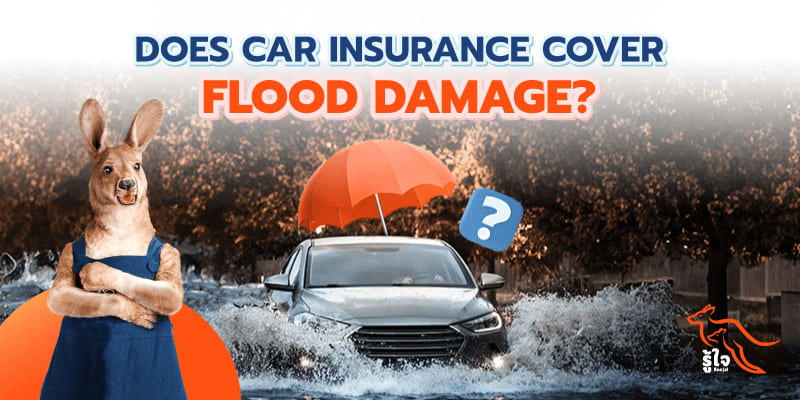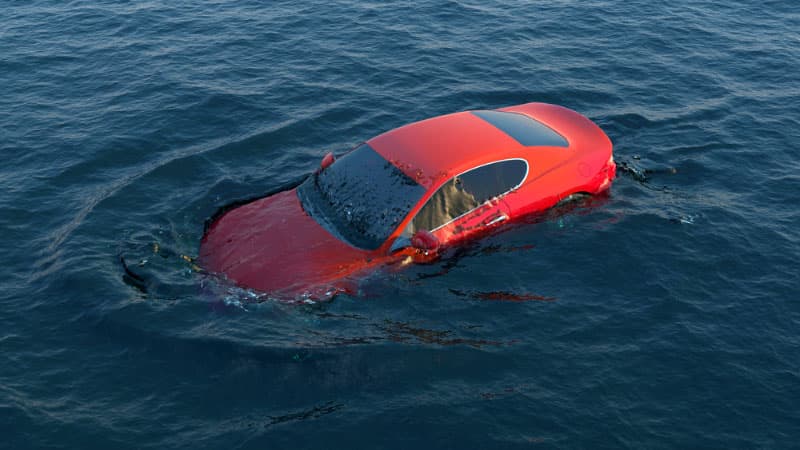
Flood damage represents one of the most significant risks to vehicles in Thailand, particularly during the annual monsoon season from May to October. Understanding your insurance coverage before encountering flood conditions is essential for proper financial protection.
This comprehensive guide examines flood damage scenarios, insurance policy types, claim assessment procedures, and coverage limitations to help drivers in Thailand make informed decisions about their vehicle protection.
Insurance policy types and flood coverage
Car insurance policies in Thailand fall into distinct categories with varying flood damage protection. Knowing which policy types include flood damage coverage is essential when driving in Thailand, as most basic policies provide no protection against natural disasters. Below is a breakdown of each policy type and its flood coverage status.
| Insurance type | Covers flood damage? | Notes |
| Compulsory (Por Ror Bor) | No | Only covers bodily injury/death of third parties and does not protect your vehicle against any physical damage. |
| Voluntary type 3 / 3+ | No | Only covers third-party property damage and extended liability coverage. Does not cover damage to your own car. |
| Voluntary type 2 / 2+ | Limited | Flood coverage is excluded by default. Some policies may include natural disaster coverage as an optional add-on at a higher premium |
| Voluntary type 1 (comprehensive) | Yes | Covers flood and natural disasters, subject to terms and conditions outlined on your policy document. |
Read more: Compare car insurance coverage in Thailand
Common flood damage scenarios in Thailand
Thailand’s tropical climate and urban infrastructure create multiple flood risk scenarios for vehicle owners:
Traffic-related flood exposure
Flash flooding during peak traffic hours can trap vehicles in standing water. This typically occurs in business districts, provincial urban centres, and areas with inadequate drainage systems. Vehicles may experience engine damage, electrical system failure, or complete submersion depending on water depth and exposure duration.
Residential property flooding
Vehicles parked in ground-level garages, parking lots, or residential driveways face submersion risk during heavy rainfall events. This scenario is particularly common in low-lying residential areas, riverside communities, and developments with poor drainage infrastructure.
Intentional water navigation
Some drivers attempt to navigate through visibly flooded roadways, either due to unfamiliarity with water depth or perceived necessity. This scenario often complicates insurance claims due to questions of driver negligence and risk assumption.
Natural disaster events
Seasonal flooding from river overflow, dam releases, or severe weather systems can affect vehicles across wide geographic areas. These events typically generate numerous simultaneous claims and may trigger special assessment procedures.

How flood damage car insurance claims are assessed
Insurance companies evaluate flood-damaged vehicles using standardised assessment criteria to determine whether the vehicle constitutes a total loss or partial loss.
Total loss
A vehicle is classified as a total loss when repair costs exceed 70% of the insured sum. This typically occurs when flood water has caused extensive damage to the engine, electrical systems, interior components and other critical vehicle systems. In flood situations, total loss is common because water damage often affects multiple interconnected systems simultaneously, making repairs economically unfeasible.
Once declared a total loss, claim payout procedures depend on the insured-to-market-value ratio:
High coverage ratio (≥80% of market value)
- Policyholder receives full insured amount
- Insurance company retains salvage rights
- Settlement typically processed within 30-45 days
Standard coverage ratio (<80% of market value)
- Policyholder receives full insured amount
- Policyholder retains salvage rights
- Additional paperwork may be required for salvage transfer
Partial loss
When vehicles experience flood damage, but repair costs remain below 70% of the insured value, the vehicle is classified as partial loss. This situation typically occurs with limited water exposure that affects specific components like floor panels, seat materials, or minor electrical systems without reaching critical engine or transmission components.
If a vehicle is deemed as a partial loss:
- Insurance covers repair costs up to policy limits
- Deductibles apply as specified in the policy
- Original manufacturer parts are typically required
- After-market modifications installed post-policy are generally excluded
Coverage exclusions and claim denials
While comprehensive car insurance policies typically include flood damage coverage, claims may be denied when specific exclusions apply or policy terms are violated. Insurance companies investigate flood damage incidents thoroughly, examining driver behaviour, circumstances, and documentation to determine claim validity.
Your flood damage car insurance claim may be denied due to the following factors:
Driver negligence factors
- Knowingly driving into flooded areas when alternative routes existed
- Ignoring official weather warnings or evacuation orders
- Operating a vehicle in conditions clearly beyond safe parameters
Policy violation issues
- Driving under the influence during the flood event
- Using the vehicle for commercial purposes when insured for personal use only
- Failure to maintain the vehicle in roadworthy condition prior to the incident
Documentation requirements
Claims may be denied due to insufficient documentation, including:
- Failure to report the incident within required timeframes
- Inability to provide adequate proof of circumstances
- Missing police reports when required by policy terms
Final thoughts
Comprehensive first-class insurance provides the most reliable flood damage protection for drivers in Thailand compared to the other types of car insurance available. Understanding your policy’s specific terms and exclusions before flood season ensures proper financial protection.
Roojai’s type 1 comprehensive car insurance includes standard flood damage coverage with streamlined digital claims processing and transparent policy terms. With competitive premiums and comprehensive natural disaster protection, Roojai delivers the reliable coverage Thai drivers need year-round.
For more insurance guides, health tips, and more, follow Roojai on Facebook or add us on LINE.




